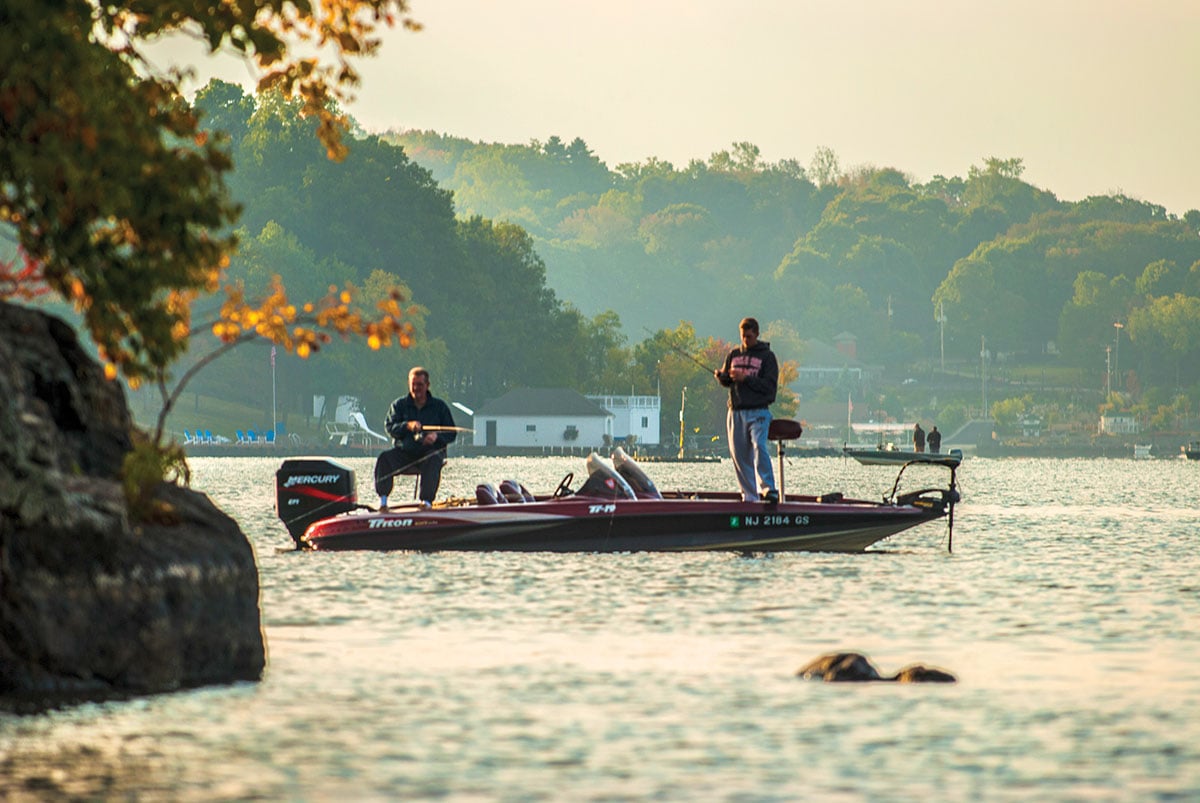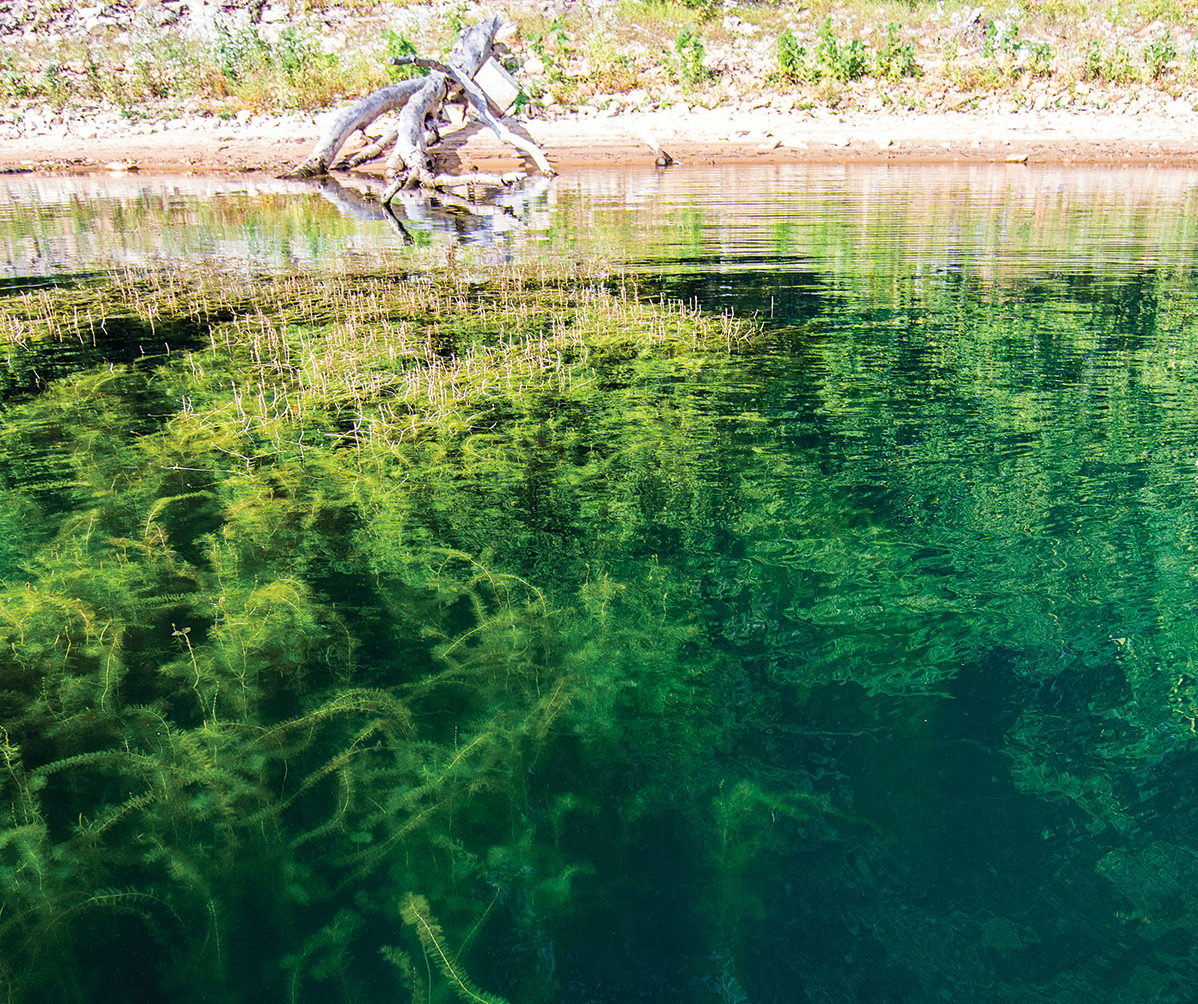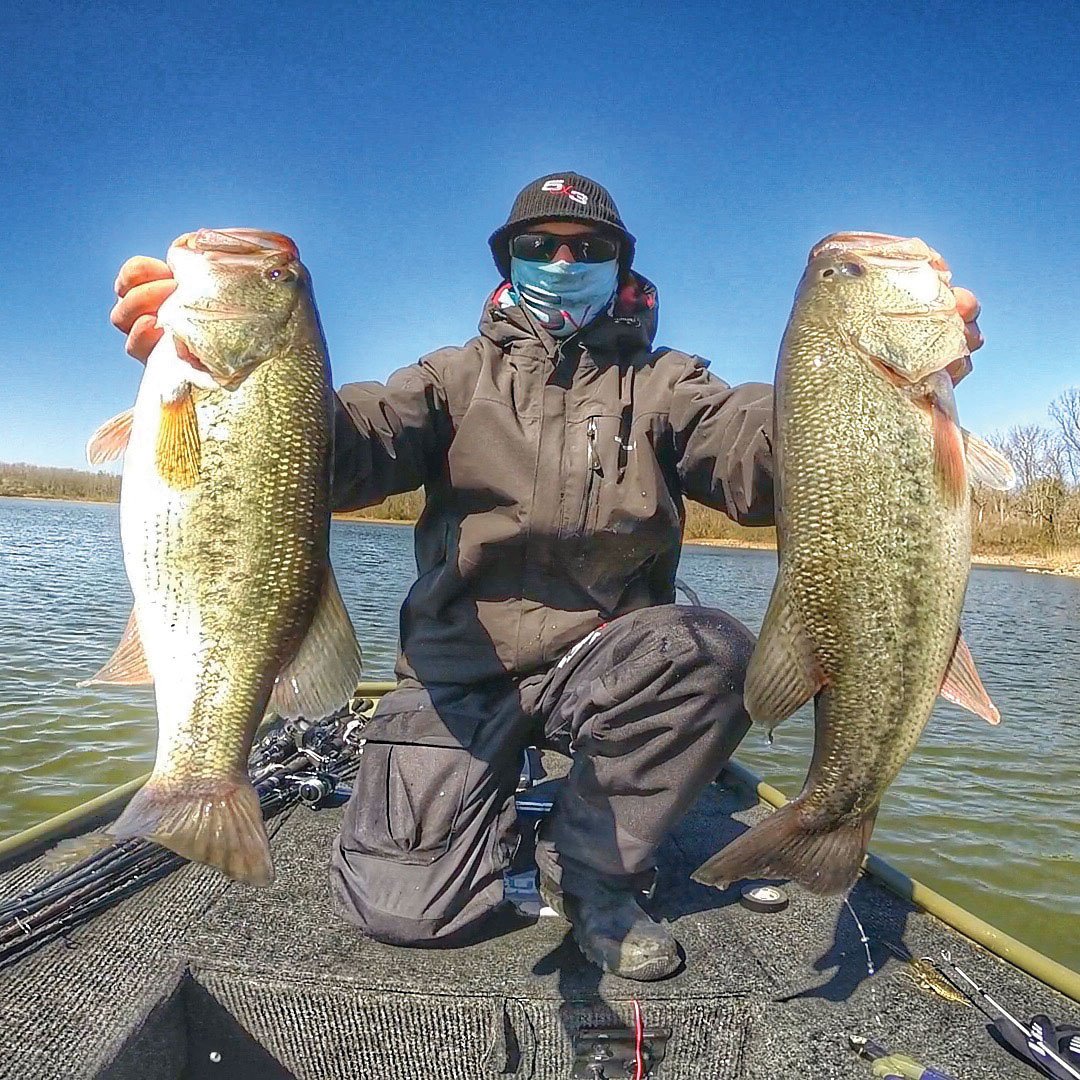
For many local anglers, September marks the start of the very best time of the year.
Early in the morning during October, Steve Vullo caught a 7-pound largemouth from 2 feet of water on a buzzbait. A full moon reflected on the blade. Five minutes later, a 4-pounder came to hand. When sun edged the horizon, he switched to a spinnerbait and fished 5 to 7 feet deep, catching two 4-pounders back-to-back.
Later in the morning under brilliant sunlight, he plumbed 10 feet of clear water with a drop shot, catching a 3-1/2-pounder. Leaving at 11 a.m., his Manasquan Reservoir catch had weighed over 22 pounds. A purpose fulfilled that progressed like clockwork, preplanned by knowledge and experience.
Vullo’s made many big catches. And when he told me he sold his bass boat and bought a kayak, I felt surprised. I grew up reading Bassmaster, and will never forget an ad of a bass boat traveling at 70 mph, hull lifted off the water. During my teens and recently, I’ve fished from some, and I feel the attraction. But few lakes and reservoirs in this state allow the use. Instead, the kayak allows Vullo to get on all sorts of lakes and ponds. He even uses it on Raritan Bay. “Our state is not big-boat friendly when it comes to fishing freshwater,” he said.
And yet New Jersey offers big largemouths. Not all of them come from the larger waters. I’m reminded of my friend Fred Matero’s 7-pounder from a 15-acre pond. On the same outing, Alex Rundella caught a 6-pounder. Someone else I know, Tom Savko, has caught multiple bass over 7 pounds from ponds of a couple acres. Vullo has caught a number of bass weighing 5 to 6 pounds from a 90-acre lake. And when it comes to catching them during the fall, you should consider two transitions from summer patterns to the fall feed, and from the fall feed to the winter slowdown.

Plenty of bass get caught on either end of the spectrum. Early September features topwater action early and late in the day. From December and on through winter, bass settle into depths where they access big-lake ledges to feed. You can jig them deep, taking pleasure in what doesn’t come easy. But in-between the two seasonal shifts, the likelihood of big-bass action is greater. Vullo, who runs a Facebook page called Fishing with Attitude, spoke to me of accessibility in the shallows and willingness to feed, and he offered advice you can put to use.
September Transition
Vullo sees bass behavior in terms of water temperature. By mid-September, surface temps will likely have fallen into the 70’s, triggering the onset of the fall feed. This means bass begin to frequent shallower water during the day, while chasing down forage fish. Increased activity allows you to effectively cover more range by using spinnerbaits and crankbaits, rather than picking at the bass with plastics or waiting for light to diminish and throwing topwaters. As Vullo put it, “September is when it gets fun again.”
If you have the choice of planning an outing for later in the month, that’s a better bet than earlier. When temps are cooler, you’re good to go. “This is when I start power fishing,” Vullo said, “Flippin’ bigger jigs, spinnerbaits, buzzbaits, crankbaits. The fish are more aggressive. They’re more likely to hit a faster moving and bigger bait this time of year.”
Vullo compared the summer pattern to the completed transition by the end of September. He told me the early and late bites of summer offer plenty of action on topwaters in the shallows, but in deep lakes, reservoirs, and ponds with sufficient oxygen, bass go down as light comes up, and he might hook them in very deep water. In shallow lakes and ponds with thick weeds, especially, the biggest bass manage to hide in stuff you might need tungsten weights to penetrate; as temps fall into the 70’s, bass neither go as deep, nor do they go as far into the thick.
“I’ll fish 2 feet early in the day. When the sun comes up, I know I don’t have to go to 17, 18 feet anymore. Maybe now I can stay in 7, 8 feet of water where the weeds are. They’ll drop down there and kind off hang in the weeds until evening, when they’ll go right back up in that shallow water,” Vullo said.
He says October offers the best action. Water temperatures drop into the 60’s, but bass continue to chase fish forage – and any lure that provokes them – until temps fall into the 50’s and action begins to slow. Don’t hesitate to throw spinnerbaits if the water gets that cold, but slow the retrieve and use a stinger hook. Bass still hit flashy baits, but not with the same gusto.
On rare occasions, however, water temperatures rise into the low 70’s, and Vullo has done especially well. He pointed out that prefrontal conditions – the onset of low pressure – can start a feeding spree. Sometimes rain comes as temperatures rise, and if the water has been on the cool side, it’s like adrenaline to the bass. “Even when the sun’s out, if you’ve got them aggressively feeding all day, you can just keep going with a topwater, especially if you’re by weeds, if you’re only in 5 or 6 feet of water where those weeds come nearly to the surface.”
November Transition

Early November water temperatures might be in the mid 50’s, bass susceptible as yet to spinnerbaits in the shallows, jigs and crankbaits a little deeper, but by the middle of the month, the surface temp typically falls below 50, bass slipping down into deeper water where they continue to feed at a slower rate through the winter.
In reservoirs and lakes when this transition comes on, find bass and the baitfish they eat beginning to situate along ledges. Vullo’s favorites break less evenly than exactly at 10, 20, 40 feet deep, but he looks for ledges edged by drops deepening to at least 40 feet. He said about the bass, “They won’t go far from the baitfish. Eventually, you fire up one fish. Usually you’ll bang three or four really fast because the rest get fired up. Then you’ll have to sit there another hour working at it all over again. It is a bit meticulous.”
Vullo’s late fall fishing might seem tedious, but by concentrating efforts, he not only gets plenty of enjoyment from the process, it yields big results. He makes catches lighting up Facebook with photos of stunningly big bass caught when others have put away rods for the winter. The photos represent an involved attempt to get bass to hit despite water temperatures turning some anglers to live shiners.
He spoke of staying on a spot for 4 1/2 hours. Why not weight live shiners with egg sinkers and wait on a take? Because by presenting lures instead, not only is better skill involved; these instances of bass getting fired up don’t happen by sitting in a boat waiting on one to passively take a shiner, which might not get other bass interested. “Bass are competitive,” he said.
Many of us have witnessed it at other times of the year. I’ve seen two largemouths caught on the same plug, one hooked on the upper treble, the other on the lower. As Vullo said, he often boats three or four big ones in quick succession, and then he works at the fish again for a lengthy period until another hits. Again, more come quickly, as if each wants to be first. He focuses on single spots he knows from experience hold bass, rather than wasting time jolting about a reservoir sampling others. It’s an exercise of persistence worthy of an enlightenment seeker. Big bass in numbers rarely come easily, but Vullo repeats the performance when they’re toughest to catch.
He also referred to one of my articles mentioning fish sense, telling me intuition puts him on bass, but he added that to begin with, knowledge of the reservoir or lake structure is needed, as well as a deep background of fishing experience from elsewhere to draw upon. Intuition depends on solid experience. It’s an immediate sense of what you’ve learned, putting you on fish right there in the moment you occupy.
Lure Selections
Late in the season, Vullo uses Shakey head jigs with 3- to 4-inch Senkos, or trimmed BioSpawn ExoSticks. Dragging a jig across the bottom, on occasion he hits a rock pile or a single rock and momentarily gets hung up. Sometimes this works to advantage. “When I pop it free, they just smash it,” he said.
He also uses Binksy bladebaits, choosing them for bass reacting more aggressively. He keeps them at the bottom, twitching them upwards perhaps a couple of feet, and letting them fall back. The retrieve isn’t entirely regular. “A lot of times the bass will throw up a herring or two once you get them to the boat and you know the Binsky is the ticket that day,” he said.
He told me sudden irregularity may work any time of year, tipping his game to the successful side of the hair-trigger readiness of fish to hit. Cold water doesn’t change a bass’s nature. Slow activity doesn’t mean they won’t react suddenly. He fishes jigs and bladebaits as deep as 40 feet. “You twitch your arm a different way; you fire it up,” he said.
Instead of choosing among a wide array of lures that catch fishermen faster than bass, Vullo limits his late fall choices to jigs and bladebaits. He doesn’t complicate choices early in the fall, either, sticking to jigs, spinnerbaits, buzzbaits and topwaters, crankbaits. He prefers green pumpkin jigs, and with any lure, he imitates natural hues. For example, he says green pumpkin imitates crayfish.
“I feel bass fishermen lose their heads over the amount of tackle, and the amount of rods, and the amount of diversity they have in their boat. They’re just thinking too much. They’re not thinking about what the fish are doing. They’re thinking about what lure they can throw next,” he said.
When the season ahead gets serious, beat the odds by firing them up.




